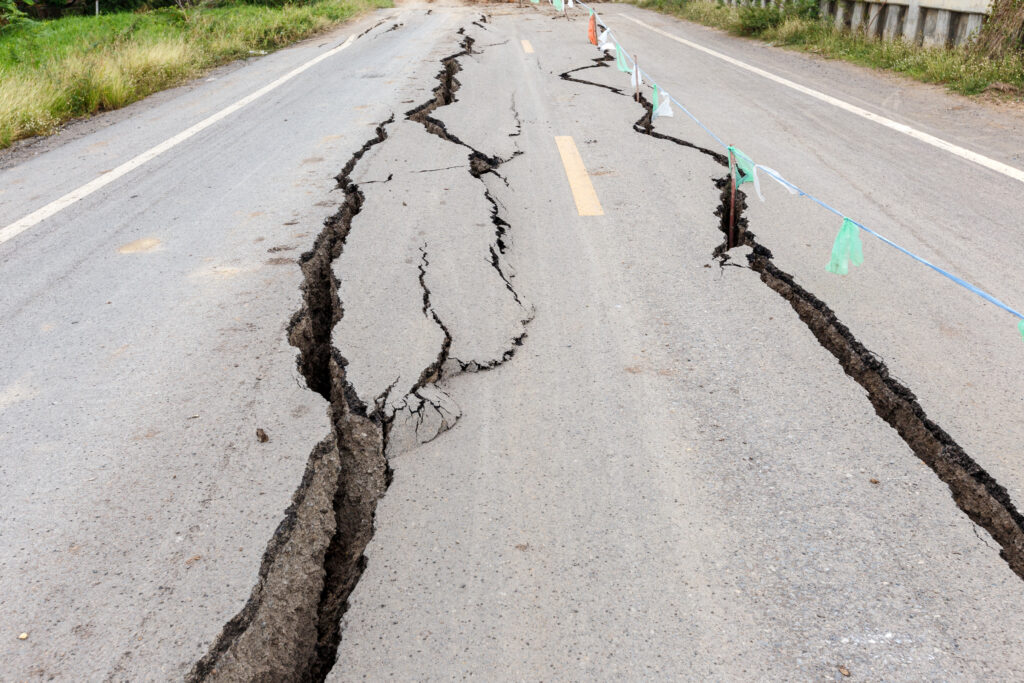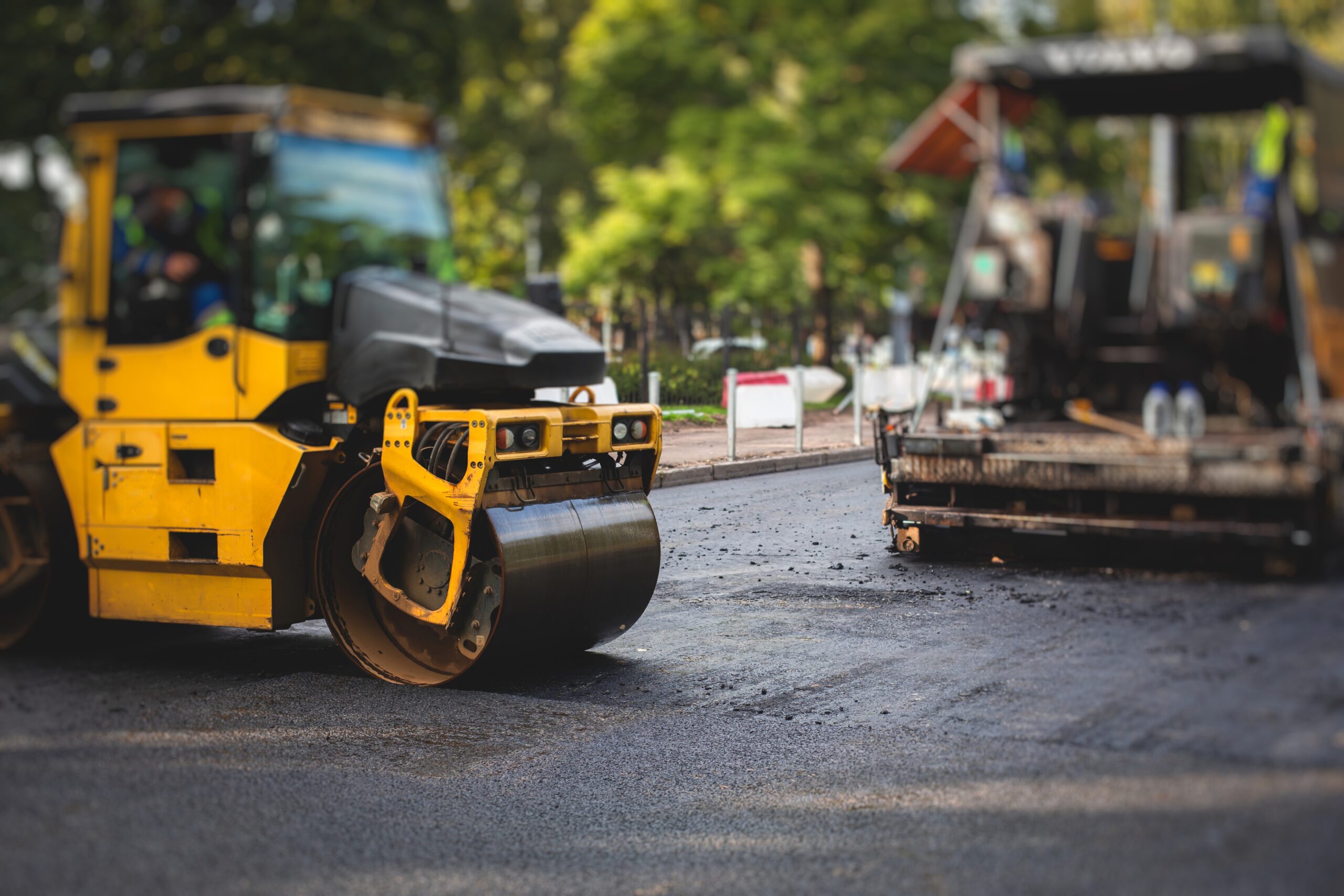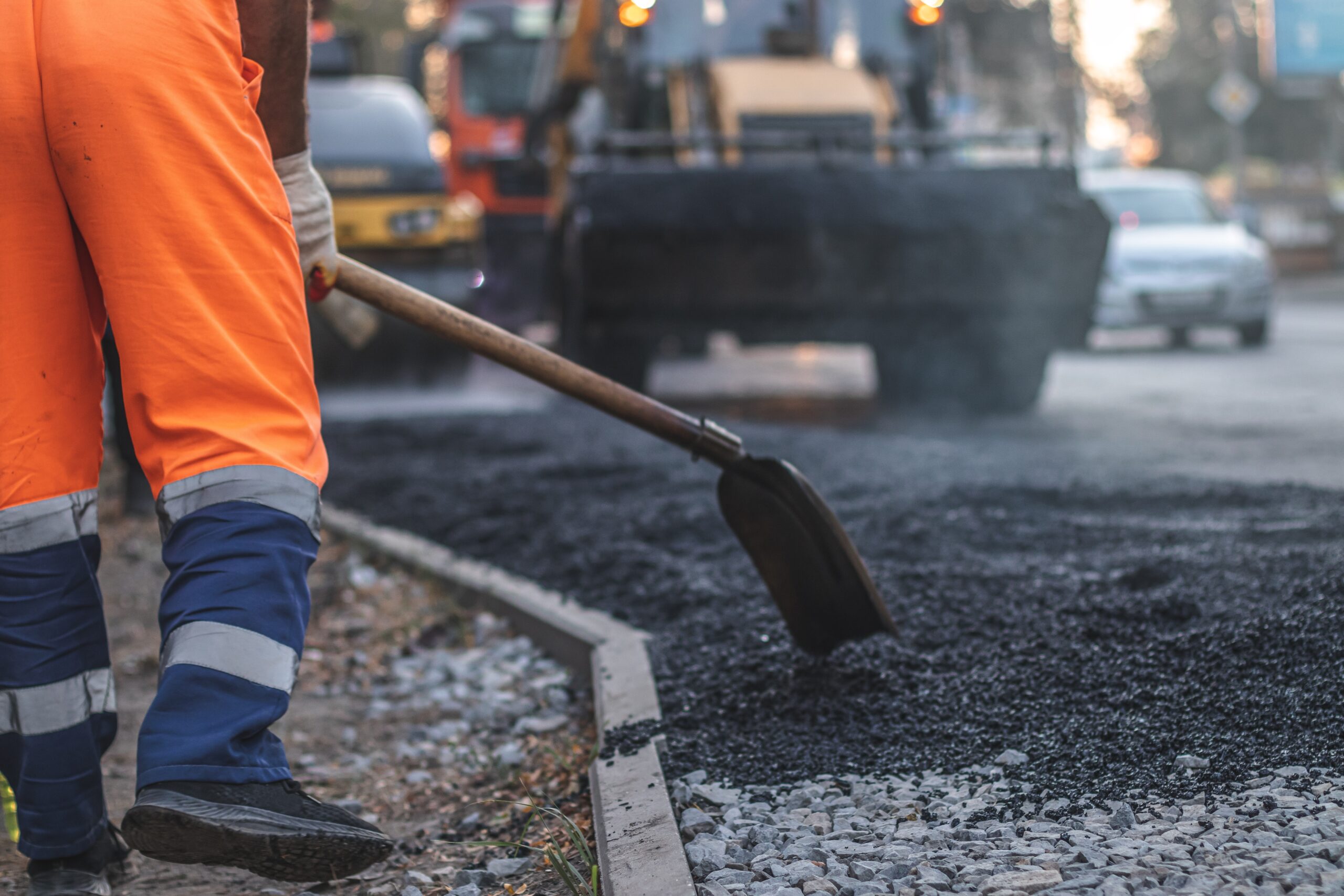
Colorado Springs sits at an elevation above 6,000 feet and faces distinct paving challenges driven by its high altitude. Higher UV exposure, larger diurnal temperature swings, and altered air and moisture conditions affect how asphalt ages, how mixes should be specified, and which construction methods are most successful in the long term.
To address these unique stresses, the region follows the Pikes Peak Region Asphalt Paving Specifications (City of Colorado Springs, Version 6, 2022), which outline requirements for asphalt binder types, aggregate properties, compaction standards, and preventive maintenance practices tailored for high-altitude conditions.
This blog explains these influences and provides practical asphalt paving guidance for material selection, construction, maintenance, and specification alignment to ensure durable pavements in the Pikes Peak region.
Adapting Asphalt Construction to Colorado Springs’ Unique Elevation
High altitude is not a single problem. It alters a set of environmental drivers that together change pavement performance and failure modes. Planners and contractors must understand all of them to design and build pavements that meet longevity and safety targets.
- UV and Oxidation Effects: Increased solar irradiance at elevation accelerates binder oxidation and embrittlement. Faster oxidation raises the risk of cracking and shortens the time to the first major rehabilitation.
- Thermal Cycling and Freeze-Thaw: Large day-to-night temperature swings cause repeated expansion and contraction, which intensify fatigue and thermal cracking through repeated cycles.
- Air Pressure and Drying Rates: Lower barometric pressure and drier air speed surface drying. Faster cooling during placement reduces the compaction window and can trap air voids if not carefully managed.
- result in faster. Combined Outcome: The overall effect is earlier surface aging, greater need for UV protection, and stricter control of temperature and compaction during construction.
Local field studies confirm that altitude and solar exposure can produce unexpected aging patterns in binders and mixes. The National Center for Asphalt Technology at Auburn University analyzed climate-driven binder aging and found that pavements in high-radiation, low-humidity environments harden faster than those in lower-altitude sites. These results underscore the importance of calibrating specifications and construction practices to the unique conditions of Colorado Springs.
High-Altitude Asphalt Mix and Binder Selection Strategies
Selecting materials adapted to Colorado Springs’ environment reduces lifecycle costs and minimizes distress over time. Mix design and binder choice must strike a balance between oxidation resistance, flexibility, and constructability, ensuring performance under both extreme solar exposure and significant temperature swings.
- Binder and Modifier Choices: Performance-graded binders should be selected for low-temperature flexibility and high-temperature rutting resistance. Where permitted, polymer modification enhances UV and oxidative resistance, thereby increasing the pavement’s durability at altitude.
- Superpave and Volumetric Mix Principles: The Superpave mix design incorporates both climate and traffic considerations, providing a framework for selecting binders and aggregates tailored to site-specific stresses. Meeting volumetric targets reduces permeability, which slows oxidation and water infiltration.
- Aggregate Considerations: Durable, angular aggregates help resist polishing and improve binder-aggregate adhesion. Gradation must be controlled to ensure adequate workability within the shortened compaction window common at higher elevations.
- Design for Constructability: Mixes should be selected with realistic production and placement conditions in mind. Overly coarse or stiff mixes are risky unless contractors can reliably achieve density within the reduced compaction timeframe.
The Asphalt Institute’s Superpave provides comprehensive specifications and construction notes. The document highlights how Superpave designs respond to climate and loading conditions, including sensitivity to temperature fluctuations and mix stiffness, factors directly relevant to Colorado Springs’ high-altitude paving challenges.

Optimizing Asphalt Construction Techniques for High-Altitude Regions
Construction practices determine whether carefully selected mixes will perform in service. At high altitudes, temperature control, compaction strategy, and sequencing must be adapted to prevent early failures.
Control mix and mat temperature
- Monitor the mix temperature from the plant to the paver to ensure it arrives at a sufficiently high temperature for proper compaction.
- Minimize haul times and use insulated trucks or temperature-tracking systems to prevent premature cooling.
Compaction strategy
- Achieve the target in-place density quickly using adequate rollers and roller patterns.
- Consider thinner lifts or higher initial temperatures where necessary to allow sufficient compaction before cooling.
Equipment and crew planning
- Use heavier or additional rollers if mixes are coarse or polymer-modified and resist compaction.
- Sequence work to limit exposure time for each mat; avoid delays between paving passes.
Quality control and measurement
- Employ real-time density or temperature profiling tools to confirm compaction targets before opening lanes.
- Document temperature, roller passes, and density for warranty and long-term performance tracking.
Field and research reports consistently show a strong correlation between compaction temperature and in-place density. Maintaining mix temperature above the contractor- and mix-specific minimum during rolling is critical to achieving density goals.
Maintenance Strategies for High-Altitude Pavements
Planned, preventive maintenance extends service life more effectively at elevation than reactive repairs. At high altitudes, the priority is protecting pavements from oxidation and preventing water infiltration.
Routine preventive treatments
- Apply regular sealcoating or surface treatments to slow UV-driven oxidation and reduce permeability.
- Seal cracks promptly to block water entry and minimize freeze-thaw damage to underlying layers.
Condition monitoring and early intervention
- Implement a pavement management cycle that includes scheduled inspections and clearly defined distress thresholds.
- Place overlays before widespread structural failure occurs to avoid costly full-depth reconstruction.
Material-specific interventions
- Use rejuvenators or polymer-modified surface treatments on aged pavements when compatibility allows.
- For thin or highly oxidized surfaces, consider microsurfacing or thin overlays tailored to binder and aggregate conditions.
Documentation and life-cycle planning
- Track treatment dates, applied materials, and recurring distress patterns to inform future design and material choices.
The FHWA manual Materials and Procedures for Sealing and Filling Cracks in Asphalt-Surfaced Pavements demonstrates that properly applied crack sealing or filling can slow structural deterioration by blocking water ingress, reducing oxidation, and limiting crack propagation.
Role of Local Specifications in Paving Projects
Local specifications translate regional climatic realities into enforceable requirements that both contractors and designers must follow. They protect owners, support consistent quality, and ensure that pavements perform under Colorado Springs’ unique high-altitude environment.
Why local specs matter
- Local specs reflect available materials, contractor capabilities, and climate-driven challenges.
- They establish enforceable targets for binder grade, compaction, allowable air voids, and lift sequencing.
Specification components to review
- Binder performance grade tables keyed to local climate.
- Mix volumetrics, allowable tolerances, and compaction acceptance criteria.
- Construction QA, temperature control requirements, and documentation expectations.
Calibration and local testing
- Agencies should locally calibrate design models and performance predictions to reflect field behavior.
- Performance-based checks and periodic recalibration maintain predictive accuracy over time.
Coordination with contractors
- Specifications align contractor practices, inspections, and acceptance criteria to minimize disputes and ensure a smooth project execution.
- Clear documentation ensures consistent results and protects project warranties.

Secure Long-Term Value With Professional Pavement Care
Colorado Springs’ altitude changes the environment in which asphalt must perform. To build luxury-grade, long-lasting pavements, you must combine climate-aware material selection, construction methods that protect the compaction window, and preventive maintenance programs anchored in local specifications.
When specifications and execution are aligned, pavements resist rapid oxidation, reduce thermal cracking, and provide a premium appearance and ride quality.
For clients seeking a luxury-focused solution that adheres to local Pikes Peak specifications and proven best practices, Asphalt Coatings Company offers tailored designs, premium materials, and documented quality control to ensure long-term performance and visual distinction.
Frequently Asked Questions
What makes high-elevation pavement different from low-elevation pavement?
High-elevation pavement experiences higher UV exposure, larger daily temperature swings, and lower air pressure. These factors accelerate binder oxidation and shorten the compaction window, requiring different material choices and construction controls.
What type of binder is best for Colorado Springs?
Use a performance graded binder selected for both low-temperature flexibility and high-temperature rutting resistance. Polymer-modified binders can enhance UV and oxidative resistance, as specified.
How can contractors improve compaction at elevation?
Maintain the mix temperature from the plant to the paver, minimize haul times, use adequate roller coverage, and monitor in-place density with real-time tools to ensure compaction targets are met.
What preventive maintenance should be prioritized for high-altitude pavements?
Prioritize sealcoating to slow oxidation, crack sealing to prevent water infiltration, and timely overlays to restore surface protection before structural failure. These actions extend service life and reduce lifecycle cost.
Why must local specifications be followed?
Local specifications encode regional climate, materials, and construction realities into enforceable requirements. Following them ensures pavements are designed and built for the actual stresses they will experience.



